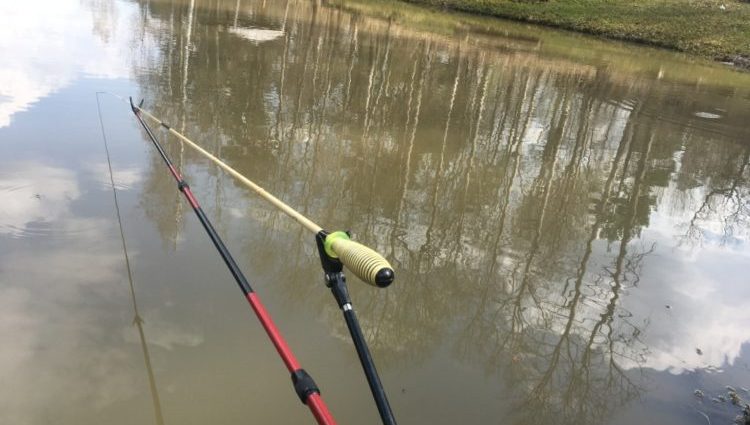Садржај
Many modern methods of fishing with roots go back to antiquity. Herabuna appeared in Japan, it was used to catch the local flat carp, from which the name of the fishing method came. Despite the fact that the method has been known for more than 70 years, it came to us only in the 10s of the 21st century. The first tests made it clear that herabuna is suitable not only for angling crucian carp, but for many other types of fish: roach, bream, silver bream, etc.
Method of fishing and tackle
The essence of the method of fishing is the equipment, which at the same time attracts fish with bait and seduces with a nozzle. For fishing use specific fly rods made of high modulus carbon fiber. Despite the long existence of the cherabuna, the shape of the rod has not changed.
Previously, they were made from durable but flexible varieties of bamboo. Today, coal or carbon is considered the most popular raw material; there are also composite compositions.
Some modern rods are made by craftsmen by hand. They go through more than 130 operations without the involvement of machinery. The cost of such products can be compared with the average price of an imported car. Of course, handmade rods are more of a historical value than a fishing tool.
The Japanese evaluate the characteristics of their forms somewhat differently. Their marking is very different from the European one, so before buying and diving into fishing, you need to study the basic nuances.
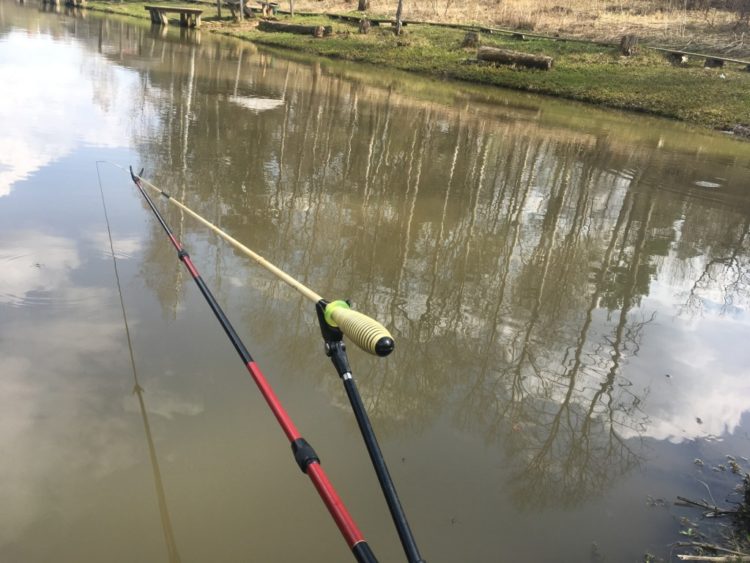
Photo: herabunafishing.com
Rods can be distinguished by their characteristic features:
- Build. This indicator is determined in a slightly different way than the fishermen of our country are used to. A weight of 300 g is installed at the end of the rod. Then the blank is carefully lifted for 11 o’clock. According to the bending point, the system is determined: fast, medium, slow.
- Tone. An additional parameter that you will not find in the European or American classification. It is determined by the same technology, but by raising the rod at 120 degrees relative to the horizon. These two parameters are considered the main characteristics of the form.
- The weight. Traditional bamboo “sticks” are somewhat heavier than modern rods. Weight greatly affects the comfort of fishing, since the process of fishing with the herabuna method is quite dynamic.
- Length. Traditionally, models are produced in several values: 2,7, 3,6, 4,5, 5,4, 6,3. The step is 0,9 m, which is equal to one Japanese shaku.
- Flexibility. The length of the rod, combined with high flexibility, provides shock absorption of fish jerks. Due to the flexibility, you can use a thin fishing line, increasing the delicacy of the tackle.
- Ways of attaching a leash. As a rule, in the whip of modern rods there is a connector to which the leash is attached. On older models, it was not there; the fishing line was tied directly or for the likeness of a whalebone.
- Handle used. Since fishing requires constant contact with the rod, the type and material of the handle affects the comfort of fishing.
A light rod, regardless of length, should lie firmly in the hand, without burdening the hand. Nylon or fluorocarbon is used as the main line. Tellingly, the fishing method involves a rigid fishing line with a cross section of 0,14 to 0,18 mm. The line in the herabun is not considered, since this type of fishing takes place in a plumb line.
Sinking line is best suited for Japanese equipment, it does not collect floating debris and transmits the slightest touch of the bait fish.
Subtleties of equipment
The specific fishing method was well thought out and perfected by the Japanese in the 50s. Over time, only the materials from which the tackle was made changed. The method of fishing involves the presence of two hooks. A larger model is installed on top, this hook serves as a holder for bait dough. From below, a hook of the required size is tied to the size of the fish. A dense bait is planted on it.
In the course of fishing, it becomes clear that herabuna is nothing more than a Japanese mach. The speed of the transfers is equal to several minutes.
Before fishing, you need to make up to 5 test casts at the fishing point in order to feed the fish. Further, the equipment is sent to the water every 2-3 minutes. For fishing use high shipped floats with long antennae. First, empty tackle is thrown into the water, without bait and nozzles, the bottom is found if fishing is carried out in the lower horizon and the depth of the signaling device is noted.
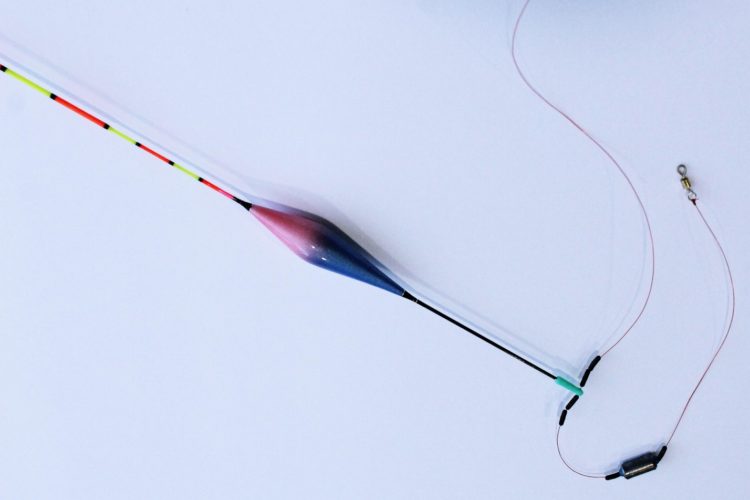
Photo: volzhanka.spb.ru
When the tackle hits the water, the dough from the upper hook begins to slowly crumble, creating a plume above the nozzle. The fish approaches a cloud of edible particles and finds the bait, followed by a bite. If no bite has occurred during the dehydration of the test, the float rises to the mark, which indicates an empty hook. The distance between the hooks should not be too large, 2-3 cm is enough.
Installation of the Herabun equipment:
- First of all, you need to make a figure-eight loop at the end of the fishing line, then attach it to the connector.
- Next, the herabuna float is installed. Usually specialized models are used, however, high-antenna and long-keel sporting items are fine.
- Leashes are attached to the main fishing line using the loop-in-loop method or a knot on which a crimp tube is put on. It keeps the joint from breaking with a float.
- As a sinker, a lead tape is used that compresses the tube.
- There are two leashes below, one is higher, the other is lower.
One fishing day with herabuna is enough to understand what kind of tackle it is. However, success often depends on the place of fishing, and not on the method. If the fish is capricious and inactive, it is difficult to lure it out. Delicate equipment increases the chances of success, which is why it is popular. Especially successful is fishing in the spring in the windows of the reeds, where crucian hides after freezing.
How and where to fish for herabuna
For fishing, you must adhere to some rules for finding a place. Herabuna works great both in open water and in areas limited by vegetation. Thanks to the accurate feed, you can catch in the most “strong” blockages, where crucian likes to stand.
Quiet backwaters, bays, sections of rivers with a moderate course are best suited for fishing. Tackle should not be demolished, since the meaning of catching is that the bait literally soars in the bait from the falling dough. The fishing method is recommended only for peaceful fish species or conditionally peaceful ones, such as chub or trout.
Promising areas for fishing on herabuna:
- обалне ивице;
- upper reaches of ponds;
- branches of rivers and tributaries with a slow current;
- swamps and lakes;
- areas with silty or grassy bottom.
Tackle allows you to fish both from the bottom and in half water. This provides a wider range of options for the angler. If the bottom is covered with mud, you can adjust the tackle a little higher than the hooks. The dough will still crumble down, passing by the bait and linger in the upper layers of mud. Such fishing is especially relevant in summer in swamps and lakes, which are overgrown with dense vegetation.
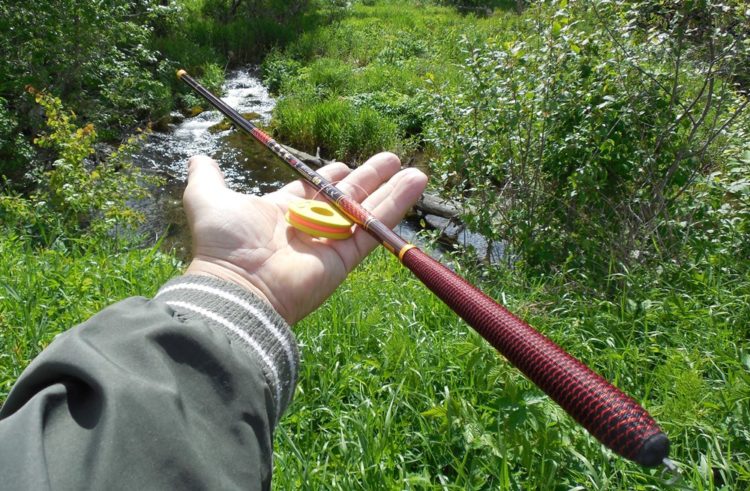
Фото: пп.усерапи.цом
With the help of the herabuna, you can also fish from a boat. Floating means allows you to come close to a promising area, for example, in the upper reaches of ponds, covered with water lilies, where crucian carp or carp bask in the sun. The breaking load of the line of 2,5-2 kg is enough to ensure a stubborn struggle for a trophy up to a kilogram. When fishing from a boat, you can increase your chances of success in playing larger fish.
It is more difficult to catch tackle in the current. The fact is that the water flow carries the dough particles in different directions, and the fish is not focused on the bait. There is a method of catching in the wiring. To do this, the tackle is thrown upstream and led with the natural movement of water. A bite can follow at any point in the passing zone. Permanent feeding creates a trail of particles, along which the fish rises to the fishing area.
It is curious that initially the herabuna was used for fishing in dense pistia and other higher plants. Now it is used everywhere in a variety of areas of water bodies.
Nozzle and its application
The composition of the classic herabuna dough has not yet been disclosed. In fishing shops you can find Japanese products for this type of fishing at an affordable price.
The dough, which is hung on the upper hook, has a number of advantages:
- rapid swelling upon contact with water;
- high degree of flowability;
- creating a dusting effect around the hook.
The composition of the bait has absorbed a lot of aromas and tastes that attract fish, as well as specific additives to increase activity even in a bad bite. The structure of the nozzle allows it to maintain a certain shape for quite a long time, even with rapid shedding. In other words, the dough does not fall in one lump to the bottom, it quickly dissolves, creating a dusty and loose effect.
To hold this kind of bait, it is recommended to take hooks made of thick wire with several grooves along the entire length. The claw shape of the hook holds the lure better than the long shank model.
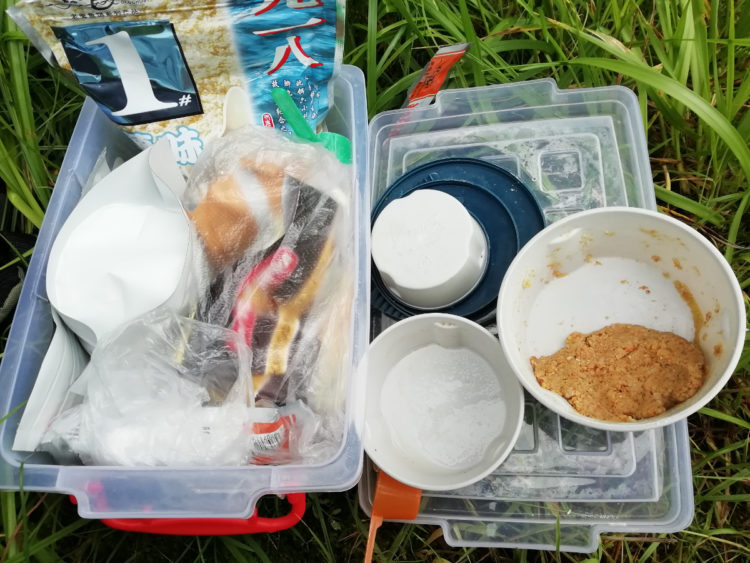
Photo: fishingmaniya.ru
The smaller thin wire lower hook is designed for a dense permanent bait, which catches the fish.
There are only a few options for the bottom bait:
- gluten bait based on powder and mashed potatoes;
- yams with wheat bran – tororo.
As a rule, the nozzle is sold in loose packaged condition. In the description you can always find the proportions of powder and water for mixing. On the fishing stalls you can find MARUKYU products. It produces both silicone baits and mixtures for the herabuna method.
Popular nozzles:
- WARABI UDON (used for the top hook, made from potato starch);
- UDON KANTAN (used in cold water, dissolves easily);
- BARAKE (used for the top hook, dusts well and dissolves quickly);
- DANGO (suitable for both top and bottom hooks).
If it was not possible to get the finished mixture, then you can try to make the dough with your own hands.
Homemade dough for herrabuna
It is not always possible to get rare Japanese goods, which sometimes include herabuna components. Only large stores or sites with the specifics of this direction can boast of a choice of rods or lures. Sometimes you have to order tooling items from afar, waiting for delivery for months. However, you can always find an alternative, or create it on your own.
За припрему теста биће вам потребно:
- dry powder for mashed potatoes – 200 g;
- fine-grained breadcrumbs – 100 g;
- gluten – 1 tbsp. L.;
- settled water – approximately 200-300 ml.
The liquid should be added gradually, the proportions may vary depending on the consistency of the puree. Gluten in this case serves as a binding element or gluten.
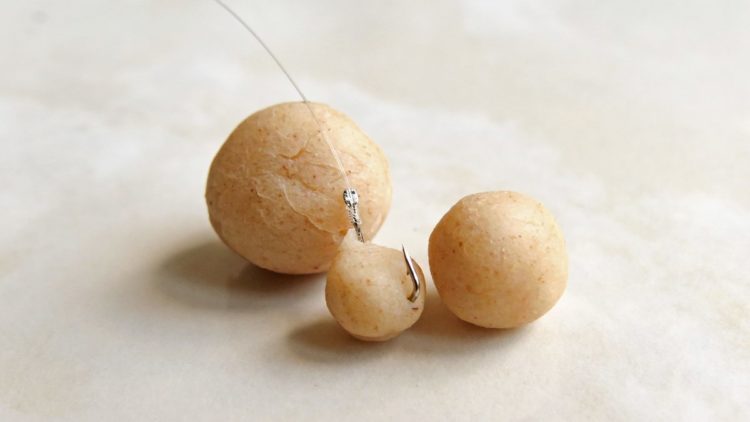
Фото: аватарс.мдс.иандек.нет
You can also add odor and taste enhancers to the nozzle: protein, milk powder, biting powder activators.
Начин припреме:
- First of all, you need to take a deep container and mix all the dry ingredients.
- Stir until smooth, you can use a tablespoon or a kitchen mixer.
- Next add dry attractants.
- Liquid components are poured together with water.
- Settled water should be poured in gradually, allowing the dough to absorb it.
- Knead the future bait by hand until a homogeneous consistency.
- Then you can do drying, if the bait needs to be stored for a month or two.
- Otherwise, everything is ready for use.
After cooking, be sure to check the dough in water. This will require a transparent container and a hanging hook. Imitation of real conditions allows you to personally observe the action of the nozzle.
High-quality dough begins to crumble immediately when it enters the water. The more time passes, the higher the amount of turbidity around the hook.
The longer the dough is kneaded, the more time it will work on the hook. On the one hand, this will increase the duration of the bait, on the other hand, you need to remember that fishing for herabuna is dynamic and requires constant recasting. The same rule applies to hooking. The harder the lump, the longer it will take to disintegrate.
Budget alternative to gear
Authentic herabuna often has a prohibitive price. If desired, you can replace a specialized rod with any light fly-type model with a minimum taper. It is important that the rod is flexible, because this parameter works as a shock absorber for all gear.
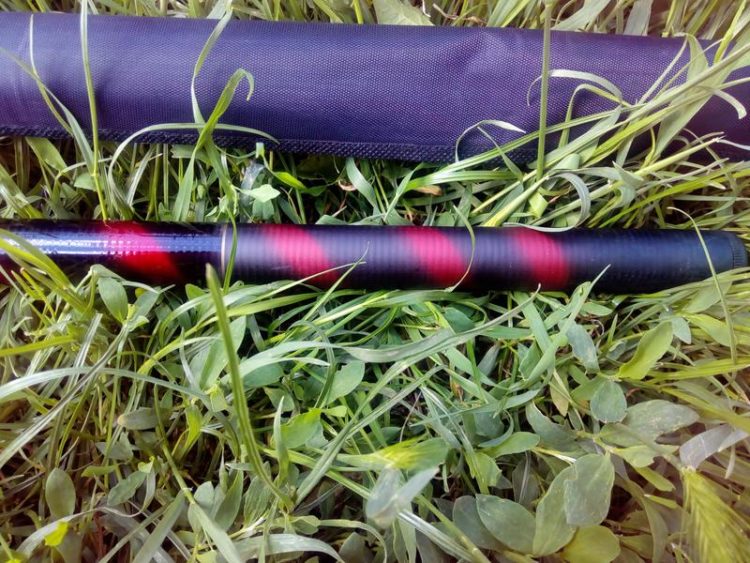
All accessories are also interchangeable. Floats with colored antennas and a long keel, hooks, lead tape – all this can be found in the nearest fishing store.
The same applies to the nozzle, you can make it yourself, both on the upper and on the lower hook. Some anglers modernize the classic swing or Bologna rod, adding elements of Japanese fishing to fishing. This can be a nozzle, and the use of several hooks, and other subtleties of fishing.
If you want to delve into the essence of Japanese fishing, then hazel will become a replacement for classic bamboo. Since ancient times, the country’s fishermen used long and even stems of hazel as fly rods. Hazelnut has an optimal wood structure. It is light, thin and has exponential flexibility. The beauty of herabuna fishing is that it requires a minimal amount of equipment to fish. Simplicity and quality are the key to the success of Japanese crucian fishing.










